- News
- Reviews
- Bikes
- Accessories
- Accessories - misc
- Computer mounts
- Bags
- Bar ends
- Bike bags & cases
- Bottle cages
- Bottles
- Cameras
- Car racks
- Child seats
- Computers
- Glasses
- GPS units
- Helmets
- Lights - front
- Lights - rear
- Lights - sets
- Locks
- Mirrors
- Mudguards
- Racks
- Pumps & CO2 inflators
- Puncture kits
- Reflectives
- Smart watches
- Stands and racks
- Trailers
- Clothing
- Components
- Bar tape & grips
- Bottom brackets
- Brake & gear cables
- Brake & STI levers
- Brake pads & spares
- Brakes
- Cassettes & freewheels
- Chains
- Chainsets & chainrings
- Derailleurs - front
- Derailleurs - rear
- Forks
- Gear levers & shifters
- Groupsets
- Handlebars & extensions
- Headsets
- Hubs
- Inner tubes
- Pedals
- Quick releases & skewers
- Saddles
- Seatposts
- Stems
- Wheels
- Tyres
- Health, fitness and nutrition
- Tools and workshop
- Miscellaneous
- Cross country mountain bikes
- Tubeless valves
- Buyers Guides
- Features
- Forum
- Recommends
- Podcast
feature
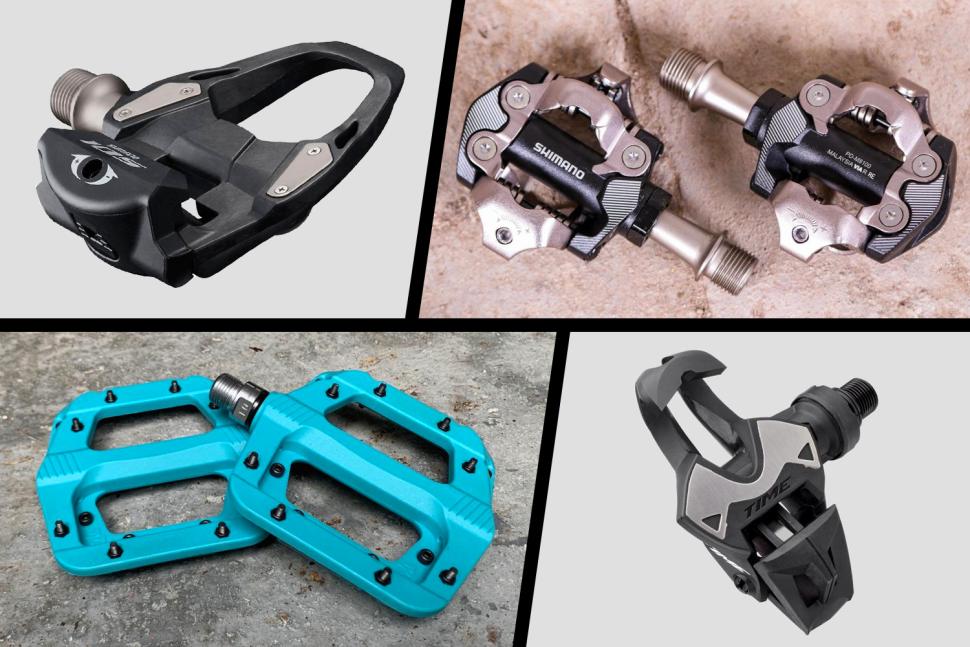 Everything you need to know about bike pedals May 2024
Everything you need to know about bike pedals May 2024Everything you need to know about bike pedals: from clipless to flat pedals and everything in between
Whether you're just starting out on your cycling journey or considering upgrading your pedal system, here's everything you need to know about bike pedals, from flat platform pedals to 'clipless' systems.
First things first: Pedals are an integral component of your bike, providing a connection between the rider's feet and the bike's drivetrain, playing a crucial role in the efficiency and control of your ride.
Pedals are generally split into three main categories: platform (flat), clipless pedals and toe-clip pedals, with hybrid pedals combining all elements of these categories. Each pedal system comes with pros and cons depending on your riding preferences and style, such increased power transfer and ease of use. When selecting your bike pedals, the first thing to think about is the type of riding you'll be doing.
Platform pedals
Platform pedals, also known as flat pedals, provide a flat surface for your foot to rest on and don't attach to your shoes meaning you can take your feet off the pedals whenever you like. They are commonly found on mountain, BMX or commuting bikes and are typically more affordable than clipless pedal systems.
So, when are flat pedals the best fit? Flat pedals offer a comfortable and convenient option for casual cyclists and can be a less intimidating option for novice cyclists while building skills and confidence.
For commuters, flat pedals may also be a good choice, especially during frequent stop-start situations at traffic lights. Additionally, they eliminate the need for cycling-specific shoes, so you don't need to take an extra pair of shoes to work.
Many mountain bikers prefer flat pedals, particularly for downhill riding as they offer increased manoeuvrability on rough terrain and the freedom to quickly bail out if needed. Similarly, flat pedals are the standard choice for BMX riders.
Clipless pedals
> Look vs Shimano pedals: which clipless pedal system is best for road cycling?
Despite the name, 'clipless' refers to the absence of the traditional toe clips and straps found on older pedal systems, rather than describing the functioning of the pedal itself. Clipless pedals do in fact require you to clip in, and clipless systems are made up of cleats which are attached to the bottom of cycling shoes.
These cleats lock into mechanisms on the pedal, creating a secure connection between the rider's feet and the bike. Regular shoes cannot be used with cleats, instead, cyclists require cycling-specific shoes, which is an additional investment.
Top tip: Make sure you choose cycling shoes that work with the pedals you want to run. For road cycling, you'll often want to look for specific road cycling shoes compatible with three-bolt cleats, while off-road riders typically use shoes compatible with two-bolt cleats. More on this later.
Many riders prefer to be clipped in as one of the main benefits is that it enhances pedalling efficiency and power transfer especially when climbing or sprinting. However, they do require some practice if you've never used them before!
Clipless pedals provide a firm, secure connection between the rider and the bike which allows for better bike handling and control, particularly at high speeds and over technical terrain. This improved stability is advantageous for all types of cycling.
There is a wide array of clipless pedal options available, encompassing both single-sided and double-sided designs. Single-sided clipless pedals are commonly favoured by track and road cyclists, whereas double-sided clipless pedals are often used for mountain biking, gravel riding and cyclocross where frequent unclipping is necessary.
So, what more do you get when you pay more?
Typically in cycling, higher-priced components tend to be lighter and of better quality. While this isn't a hard and fast rule, more expensive pedals often feature lightweight materials like carbon fibre or titanium, along with better quality bearings.
Toe-clip pedals
As briefly mentioned above, before the adoption of clipless pedals, bike pedals often featured a toe clip and strap mechanism, similar to those seen on exercise bikes at the gym. The toe clip is designed to hold the front of your shoe in place, offering some stability while pedalling.
They offer a middle ground between platform pedals and clipless pedals, and while they are less common today, they are still favoured by some cyclists for commuting, touring or recreational riding. They provide some of the benefits of being attached to the pedal while allowing you to wear regular shoes.
Hybrid pedals
Hybrid pedals, also known as dual-sided pedals, are a bit of a sub-category that fit somewhere in the middle. They have a platform on one side and a clipless mechanism on the other side, providing the flexibility to choose between clipping in with cycling shoes or opting for flat shoes.
Hybrid pedals are great for riders who want to gradually build their confidence clipping in, though they may not match the efficiency of standalone flat or clipless pedal options.
Pedals for specific disciplines
Now that we've given an overview of the main categories, let's take a closer look at the options available for different types of riding.
Road bike pedals
Road bike pedals typically belong in the clipless pedal category and feature a three-bolt cleat pedal, designed to increase pedalling efficiency and power transfer. With numerous options available across various brands and price points, let's have a look at the differences to consider.
1. Look
In 1984, Look adapted its ski binding concept to cycling and introduced the PP65 Delta pedals. These were the first widely available clipless cycling pedals that enabled riders to clip in and out without the need for a hand-operated lever to release the shoe.
Look's Delta cleat and pedal system was around for over two decades before moving to the Kéo design, which remains today.
So, how does it work? You hook the front of the cleat into the nose of the pedal and press down. A spring-loaded mechanism at the back of the pedal then grabs the cleat, holding your shoe in place until you twist sideways to release.
There are two distinct styles of Kéo pedals: the standard Kéo and Kéo Blade. The standard pedals use a spring mechanism to hold the cleat in place, whereas the Kéo Blade uses a carbon leaf spring retention mechanism. The 'blade-lever' system used in the Kéo Blade pedals is 20% lighter than the 'spring-lever' system used in standard Kéo pedals, according to the brand.
Weight
While weight is far from being the most important aspect of a bike component, it still matters.
In its line-up, Look offers nine different Kéo pedals at the time of writing. The cheapest Kéo, the Classic (currently £49.99) weighs 350g/pr including cleats, and at the top of the range, Look has gone all-out to save weight on the Kéo Blade Carbon Ceramic Ti model (£299.99), which as the name suggests has titanium axles, ceramic bearings and a carbon fibre body. A pair with cleats weighs a claimed 260g.
Float
Float refers to the freedom that the foot has to rotate horizontally when the shoes is clipped into the pedal (more on that down below). Look offers three different coloured cleats, each colour matching a different degree of float - 0º (black), 4.5º (grey), and 9º (red).
Power pedals
The French brand offers power pedals in its line-up. One benefit of using a pedal-based system is that it’s easy to switch the power meter between multiple chainsets if you own more than one bike. Pedal power meters look pretty similar to normal pedals and don't weigh a lot more either.
The Kéo Blade Power Single pedals (£599) measure power from one pedal while the Kéo Blade Power Dual pedals (£899) measure power from both pedals and have a claimed weight of 260g.
2. Shimano
> SPD-SL v SPD — which clipless pedal option is for you?
Another big player in the clipless pedal industry is Shimano, who released its first clipless pedal and shoe system in 1990, the SPD (Shimano Pedalling Dynamics), designed for off-road riding.
In 2003, Shimano released its SPD-SL road pedal, which along with Look Kéo, are the most popular clipless pedal designs for road cyclists. They look very similar and work in the same way. So, what's different?
Weight
There are five different SPD-SL pedals available, each corresponding with a groupset. The base-model SPD-SL pedals, PD-RS500s (£59.99) come in at a claimed 320g without cleats; a pair of cleats weighs 74g, so that’s 394g in total.
Shimano’s top pedal is currently the Dura-Ace PD-R9100 model (£234.99), that makes use of a carbon fibre body, and has a claimed weight of 228g. Shimano includes cleats with hollow screws to shave off 1.4 grams, so you’re looking at about 300g in total.
Float
Similarly to Look, Shimano also colour-code their cleats and there are three float options for their road cleats. Fixed cleats have red bits on them, cleats with blue trim have two degrees of float, and yellow-decorated cleats have six degrees of float.
Almost all cleats provide their float by pivoting at the nose, except for Shimano’s yellow cleats which pivot in the middle.
3. Time
The French brand Time, owned by SRAM since 2021, has recently updated its clipless pedals range into a simpler and sleeker line-up. Six different iterations of the XPro and five different XPresso pedals are still available to buy on Time's website but the range is set to condense to three models of the XPro and two different XPresso pedals.
All of the XPro pedals have been made with injected carbon-fibre composite bodies with a stainless steel plate, but it's the internals that differ depending on the pedal.
Though you could previously alter the Q-factor on the Time pedals by swapping the cleats around, Time has now introduced three spindle lengths to the XPro range (more on that below).
The XPresso lineup is a little bit more affordable. It forgoes the three spindle length options and the pedal bodies and spindles are less focused on pure lightweight-ness with glass-fibre composite bodies.
Weight
The XPro pedal series is Time's ultimate road performance pedal and according to Time, the range-topping XPRO 12 SL (£440) is " the lightest pedal system currently on the market", with the pair of pedals weighing a mere 174.6g.
The XPresso 2 is currently the most affordable option in the range (£46.99), weighing 115g per pedal which is 230g for the pair.
Float
The XPro and XPresso pedals are compatible with Time's ICLIC cleats which offer 5º of angular float and 1.25mm of lateral float. A "fixed" ICLIC cleat is also available with 5º of angular float and 0mm of lateral float.
4. Wahoo Speedplay
Speedplay breaks the mould with its clipless pedal design, with the pedal itself serving as the fixed portion of the binding system. This means that Speedplay pedals offer dual-sided entry and one of the main appeals of Speedplay pedals is their huge degree of adjustability.
Those who love Speedplay pedals rave about the low weight, adjustability, and shallow stack. A recent redesign of the cleat added a rubber aero cover that makes them far easier to walk in than the previous version, or many other systems.
The Wahoo takeover of Speedplay has resulted in a slight rejigging of nomenclature, with the five sets of pedals now being called the Comp, Zero, Aero, Nano, and Powrlink Zero, with the latter being available in either single or double-sided power meter form.
Weight
The most expensive and also lightest pedals in the range are Speedplay's Nano pedals (£379.99) with a claimed weight of 168g for the paid, featuring titanium spindles. The Wahoo Speedplay Comp Pedals (£134.99) are the most affordable in the Speedplay range, using a heavier chromoly axle to save cost, weighing 232g.
Float
Speedplay pedals are known for their high adjustability, and its road cycling pedals can be set from a fixed position (0 degree float) to anywhere up to 15 degrees by adjusting the limit screws on the outside of the cleat.
However, unlike other major road pedal systems, you can't alter the pedal tension of Speedplay pedals.
Power pedals
Power pedals are available in Speedplay's range - the Powrlink Zero single-sided (£549.99) or double-sided (£849.99). Released in 2022, the Powrlink Zero was the first road pedal-based power meter to offer dual-sided entry.
Mountain bike pedals
Mountain bike pedals can be clipless, platform or hybrid, depending on your preference.
Mountain bike clipless pedals feature a two-bolt cleat pedal, requiring shoes that are compatible with two-bolt cleats. Mountain bike cleats are recessed into the sole of the shoe, making it easier to walk around in them compared to road shoes, where the cleats protrude externally from the sole.
Mountain bike clipless pedals differ quite a lot from road clipless pedals as they typically have double-sided entry, more float and more robust construction. This doesn't mean that they can't be used on a road bike though. Mountain bike pedals make a great choice for beginners wanting to try out clipless pedals for the first time thanks to having more float and double-sided entry, often making them easier to clip in and out of.
Two-bolt mountain bike pedal systems are widely used for gravel riding too and are a good choice for commuters as they are easy to walk around in. Some brands now even offer two-bolt cleat shoes that look like casual trainers, for example the Adidas Velosamba COLD.RDY Cycling Shoes.
The most popular option for off-road riders tends to be Shimano's SPD system as there's plenty of room in the body for mud to pass through, they are double-sided, and pretty much bombproof.
Other popular options include Crank Brothers, Look and Time.
Pedal jargon buster
In this section, we'll decode some key terminology associated with clipless pedals.
What is float?
> The most common bike fit mistakes and how to avoid them
Most pedal systems allow for some degree of movement, referred to as float, which permits the foot to rotate horizontally while clipped into the pedal.
Float is primarily determined by the design of the cleat, with various brands offering cleats with different levels of float. Float can either be fixed or adjustable, depending on the pedal system.
The more float your cleats offer, the less your foot will be locked into a fixed position while riding, which allows your legs to track naturally while pedalling, helping to reduce the risk of injury.
What is stack?
The term stack refers to the height of the sole above the pedal axle, and it's generally considered to be a good idea to make it as low as possible; for the same reasons that a large, wide contact patch is good: improved stability. That’s not a trivial task. You’ve got bearings, a pedal body, an engagement mechanism and a cleat to cram in between the axle and the sole.
Stack height will vary from one pedal to another so if you're looking to change to different pedals, it's important to look at the stack height as you may need to make changes to your saddle height.
What is Q-factor?
Q-factor refers to the lateral distance between the outer edges of the cranks but is sometimes used to describe stance, the width between your feet while pedalling.
Stance is one of the areas on your bike with the smallest amount of adjustability as you can only increase it by moving the cleats on your shoes or swapping to pedals with longer axles.
Spindle length is another term associated with Q-factor, measuring the distance from the pedal shoulder to the centre of the pedal platform. The standard spindle length is typically 53mm, but longer options are available to accommodate a wider stance. Importantly, despite longer spindles making a wider stance, they don't increase the Q-factor, as the distance between the cranks remains unchanged.
The spindle length is 53mm for all Look Kéo pedals, and all SPD-SL pedals except Dura-Ace, which is 52mm. Shimano also offers another option of SPD-SL pedals with 4mm longer axles.
Time's Xpro pedal range has three spindle lengths: 51mm, 53mm and 57mm, and Wahoo's Speedplay Zero model comes in multiple spindle lengths, so as well as the standard 53mm, you can increase it to 56mm, 59mm or 65mm.
What is pedal tension?
Pedal tension is the level of force required to clip in and out of the pedal to engage/disengage the cleats from the pedal mechanism. It's adjustable on most pedals by turning the adjustment bolt to adjust the spring force of the binding.
The ideal pedal tension will vary between different people but in general, pedals should be tightened enough to ensure that they are secure, preventing you from accidentally unclipping during a sprint or out of the saddle up climbs. However, they shouldn't be so tight that they are difficult to clip in and out of as needed.
Maintenance tips
Like all components on your bike, pedals will typically require maintenance to keep them working as they should be.
> How to keep your bike running smoothly
Tip number one: When installing your pedals on the crank arm, make sure you apply grease to the pedal threads. Missing out on this step may result in annoying creaks when you're pedalling and can cause the spindle to seize on the crank arm.
Tip number two: Regularly inspect your cleats and pedals for signs of wear and replace if necessary. If you find that you're having difficulty clipping in or out smoothly and consistently, or notice an increase in float compared to normal, it could be a sign that either your pedals, cleats, or both are worn down. Pay close attention to the front and back edges of your cleats. If you're unsure, compare new ones to your old ones.
Tip number three: When cleaning your bike, don't miss out on wiping over the pedals. Regular cleaning will make it easier to clip in and out and helps to prevent premature deterioration. It also allows you to inspect them for any early signs of wear.
Tip number four: The spindle that attaches to the crank arm, uses bearings which may need occasional maintenance. If you notice any creaking or stiffness when spinning the pedals without being clipped in, it may indicate that the bearings need greasing. Some pedals, such as Speedplay, feature built-in grease ports for easy maintenance. but on many Shimano models the spindle can be removed easily from the pedal body to allow you to re-grease.
Which pedal system do you use? Let us know in the comments section below...
Emily is our track and road racing specialist, having represented Great Britain at the World and European Track Championships. With a National Title up her sleeve, Emily has just completed her Master’s in Sports Psychology at Loughborough University where she raced for Elite Development Team, Loughborough Lightning.
Emily is our go-to for all things training and when not riding or racing bikes, you can find her online shopping or booking flights…the rest of the office is now considering painting their nails to see if that’s the secret to going fast…
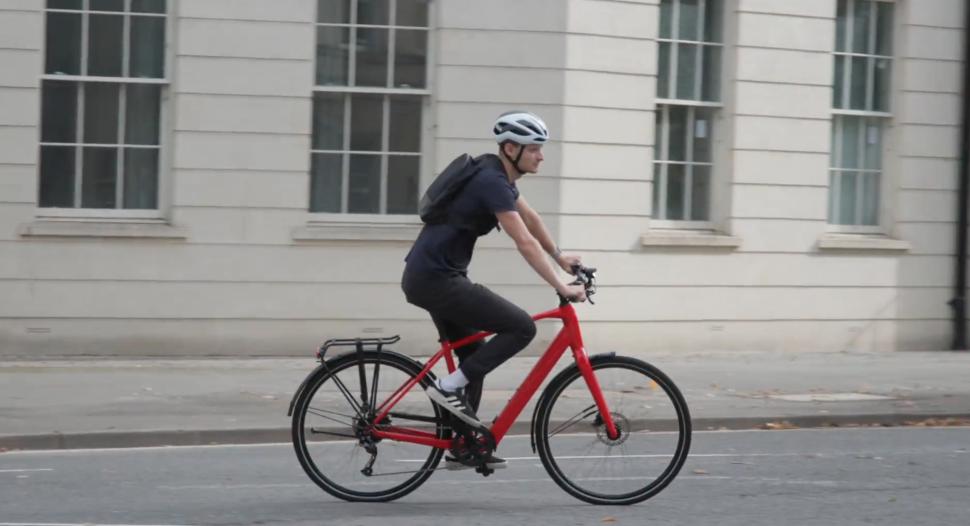


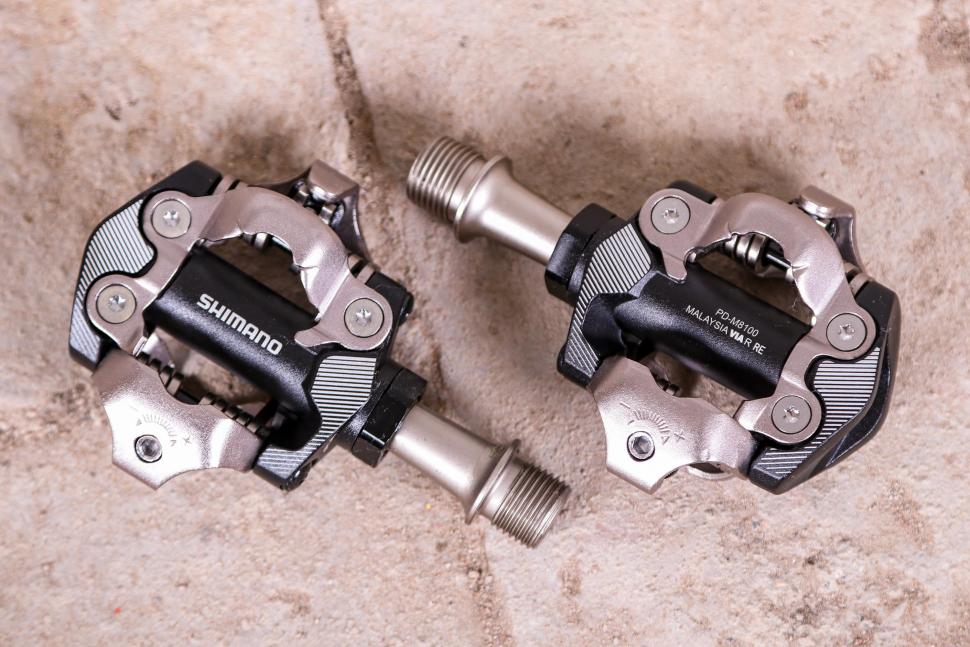

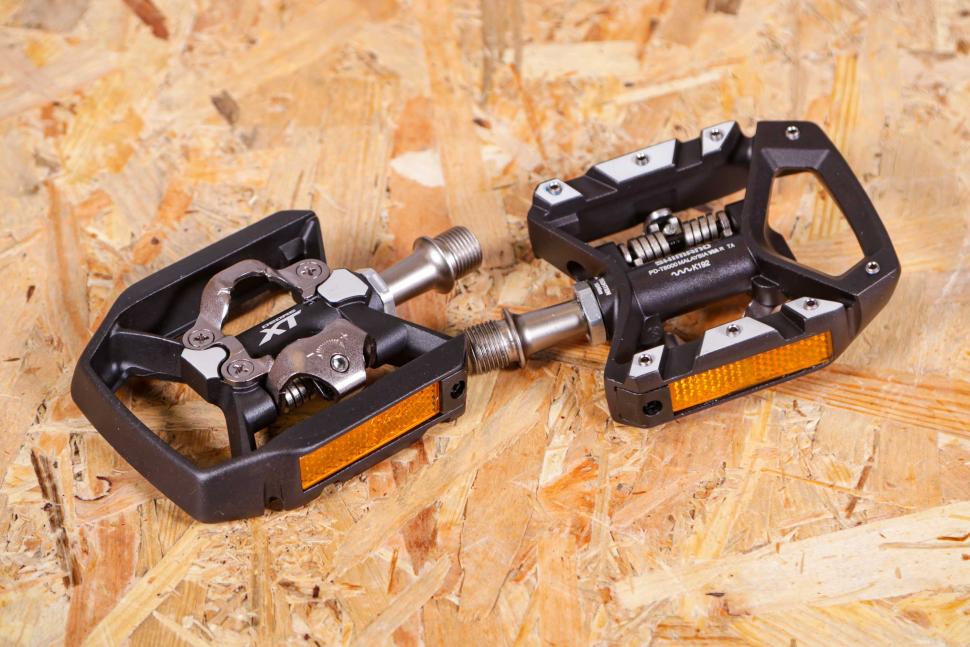


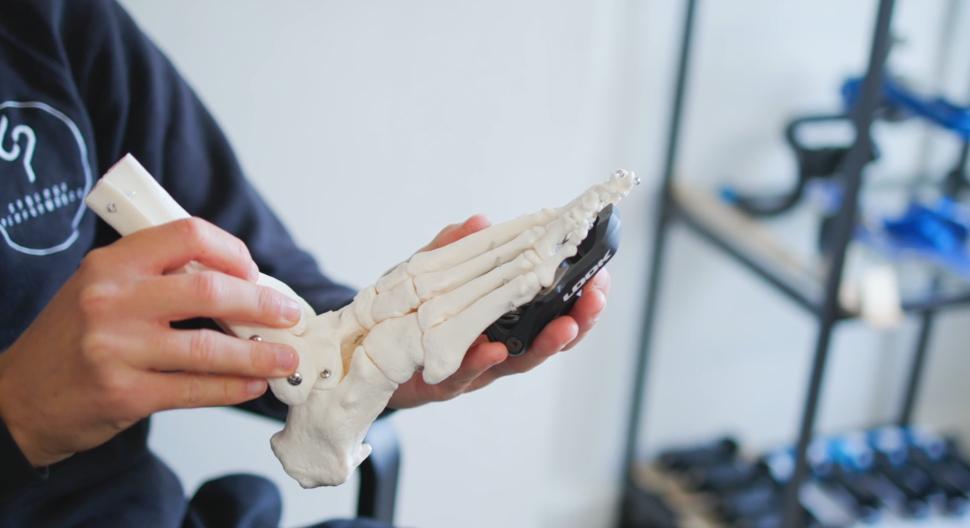

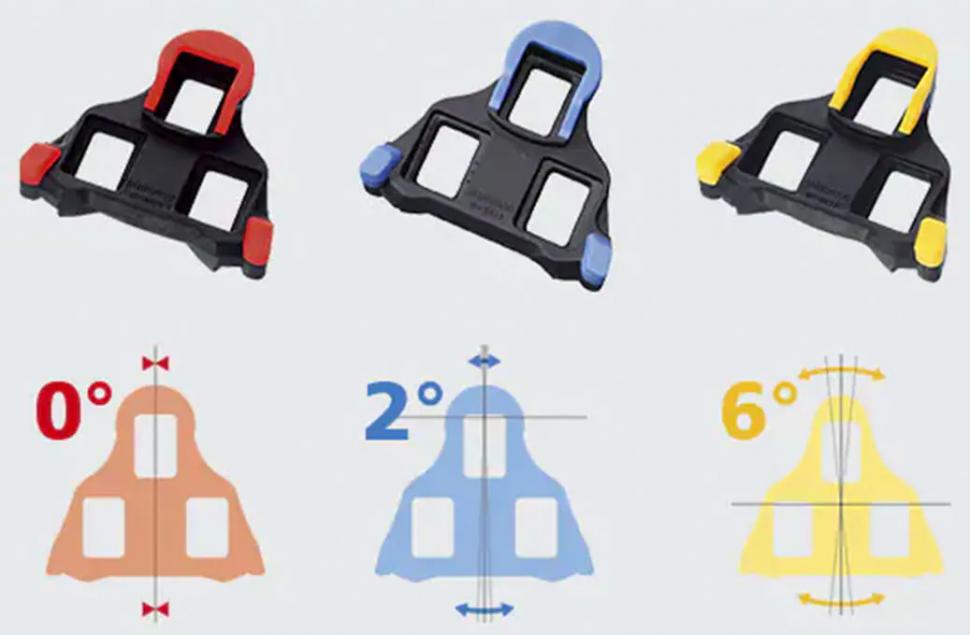
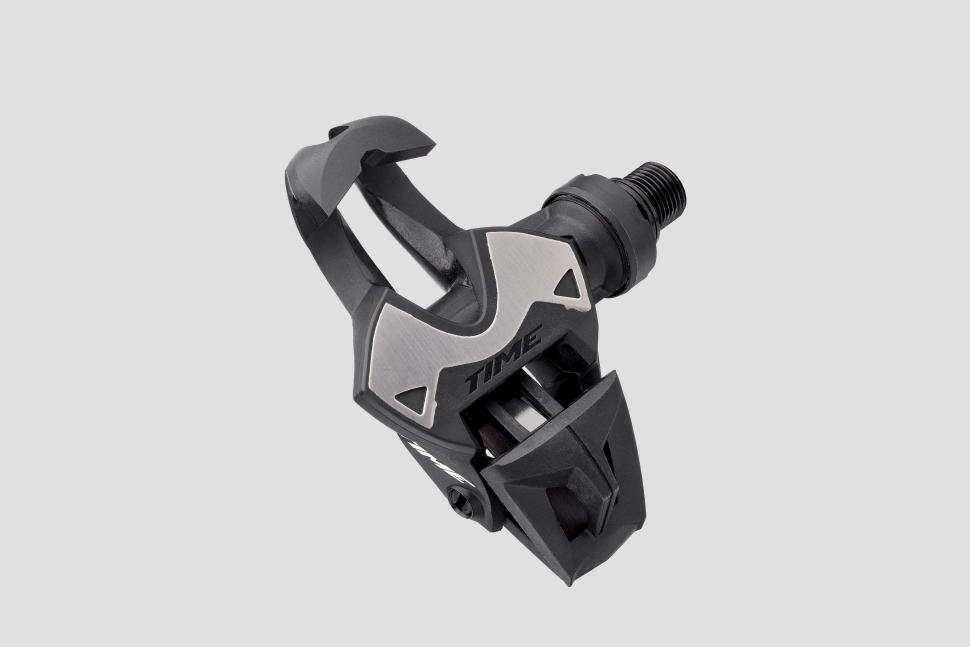


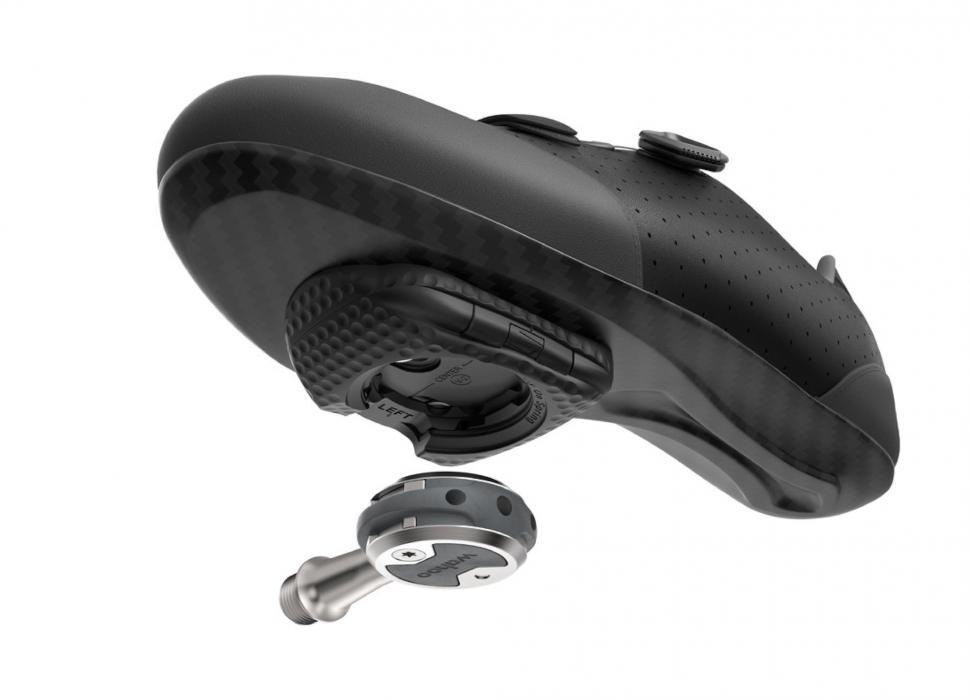
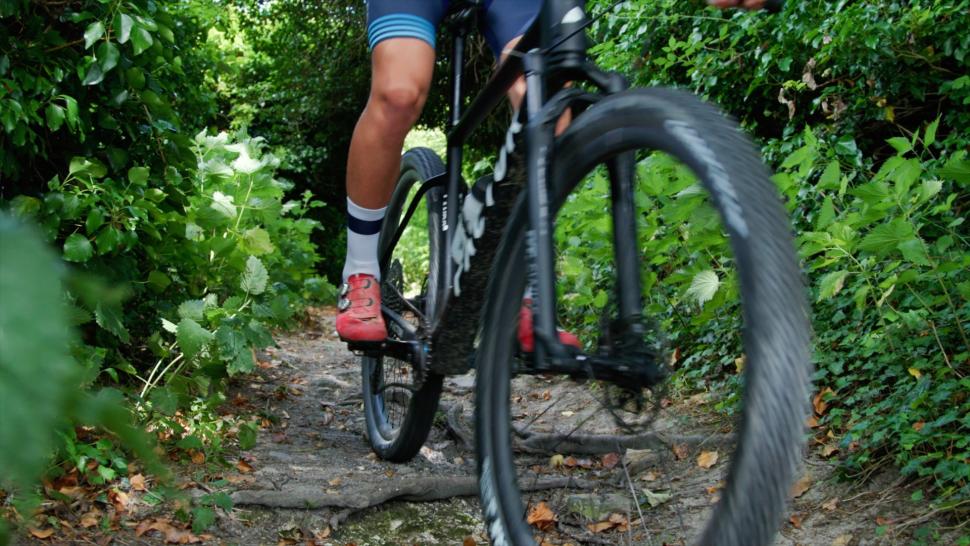

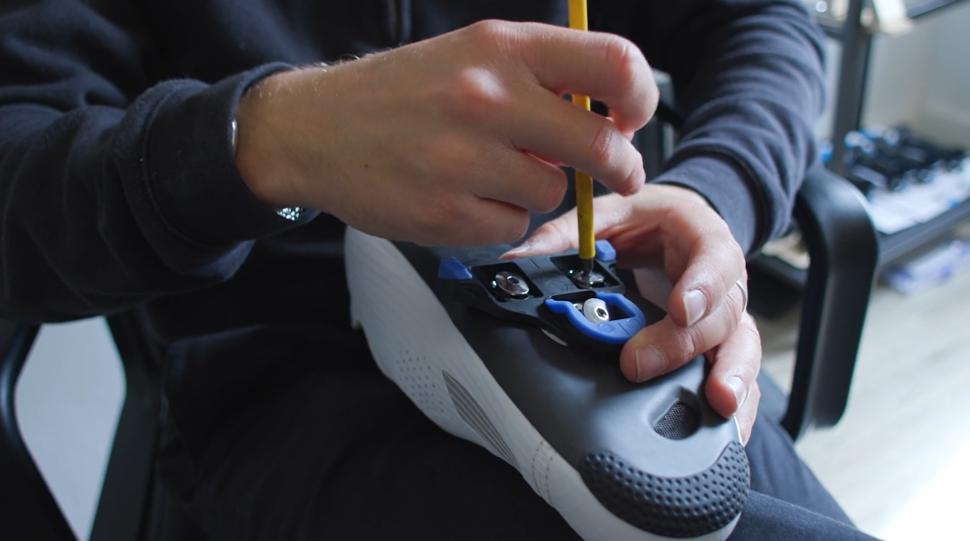

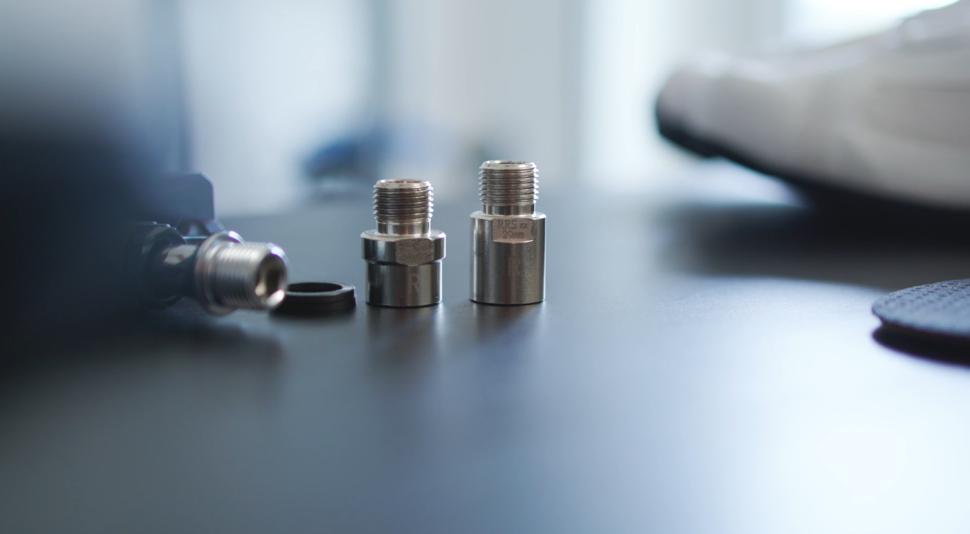
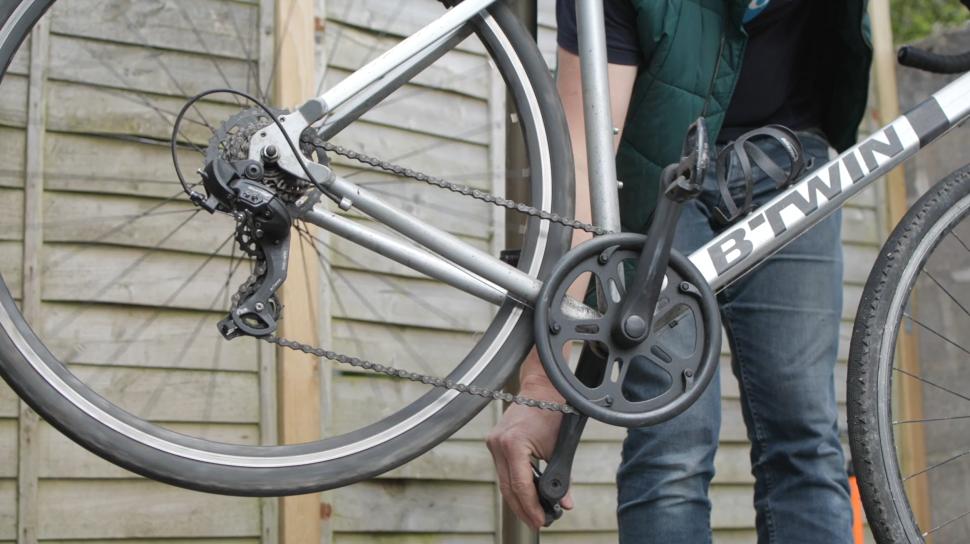
£1500, if it were levied, would seem a fair price to pay for saving desperate men, women and children from appalling death by drowning, to most...
Another day, another BristolPost piece about Park St: https://www.bristolpost.co.uk/news/bristol-news/park-street-bus-gate-latest-10008820
It's actually not the first time - have a read of Geoff Thomas's autobiography.
I have these on a steel Galaxy, they make a great big ding rather than a click. I love changing gear with them.
A fierce row at the heart of Reform UK - what's going on?...
Even if the guy gets this a lot, it's still worth my being the 940th person to note that it's Cllr De'Ath overseeing a whopping four roads in...
It was a bit more complex than that I think, the Badger had already been suffering from tendonitis for quite some time before (many said due to his...
That's going to make life needlessly difficult when I want to (perfectly legitimately) filter through traffic or indeed get through my front door...
What jaymack said....
Where are Zebedee and Ermintrude when you want them?